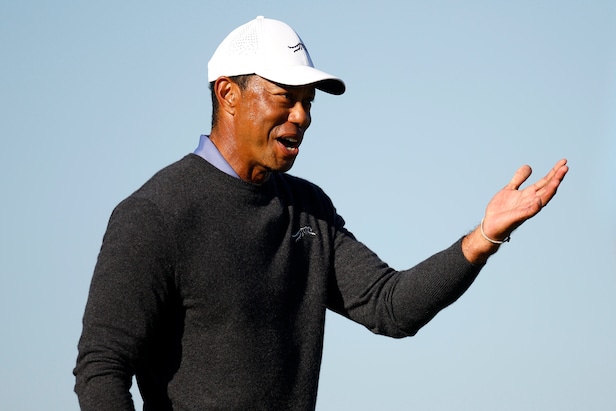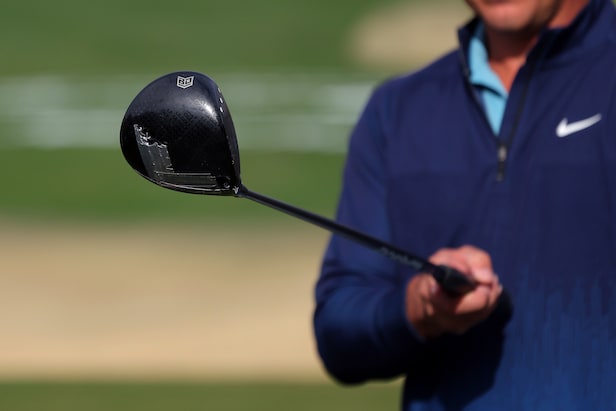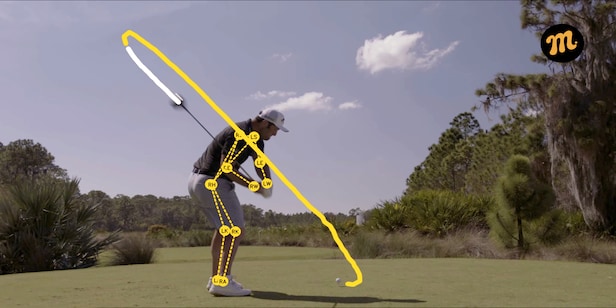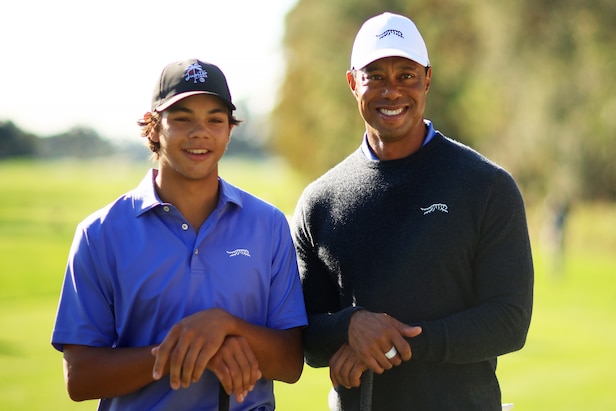Troubles off the tee? Why Wyndham Clark, the tour’s best fader, should be your model – Australian Golf Digest

- by Admin
- October 3, 2024

Many tour players, like 2023 U.S. Open Champion Wyndham Clark, find a fade easier to control than a draw, especially with the driver. And we’re not talking weak slices—if you do it right, there’s no loss of distance. The key is starting the ball to the left of your target (for right-handed players) and hitting with a slightly open clubface to impart fade spin.
To break down Clark’s swing, we uploaded it into the new Mustard Golf app. Golf Digest has partnered with Mustard to create an automated swing-analysis tool that takes a user’s swing video, grades strengths and weaknesses, and then delivers personalized instruction.
Analysis showed three keys in Clark’s technique that help produce his power fade, and they’re all fairly easy to copy—even easier if you already hit the ball left to right.
- First, he aligns his shoulders open at address.
- Second, his downswing is slightly on the steep side.
- Third, he doesn’t let the clubface close at impact.
Let’s take a look at how Clark gets into these positions and how they promote a fade.
Shoulder alignment at address pre-sets the path of the clubhead during the swing. With his shoulders open, Clark starts the clubhead back a touch to the outside, which encourages an out-to-in path on the downswing. That helps start the ball to the left.
To maintain this out-to-in path through impact, Clark uses his body turn to lead the downswing. He rotates hard toward the target, with his hips leading and pulling his upper body, so that his body lines are opening to the target when he hits the ball.
RELATED: Rose Zhang shows how you can swing smooth and still rip it
In the Mustard app, users get a score for a position called “moment of truth,” which comes at about halfway down. As the name suggests, the swing is on cruise control at this point; the golfer can’t manipulate the club anymore. In effect, it predicts what will happen at impact.
The key position at moment of truth is the angle of the shaft compared to the trail forearm. If the shaft matches the forearm, the club is on plane, and the path through impact will be directly down the target line. If the shaft is tilted on a steeper angle, the path will be out to in. Clark’s shaft measured 5 degrees above the forearm (below), perfect for his fade.
With the path taken care of, all that’s left is delivering an open clubface at impact. Clark does this by keeping his body turning and also maintaining some bend in his trail elbow. That little bend in the elbow means he’s dragging the club down, not throwing it by straightening the arm. Dragging is the best way to keep the clubface open into impact.
The other benefit of keeping the trail elbow bent is that it gives the swing a power boost through the ball. Once the elbow straightens, the club is slowing down. So a little bend at impact means the clubhead is still accelerating, and that means more speed.
In summary, here’s how to test-drive Clark’s power fade next time you hit the range:
- Set up with your shoulders slightly open.
- Turn your body to lead the downswing—and keep turning through.
- Extend your trail arm through impact, not before.
Get those few points right, and you should see shots that start to the left and fade to your target. With some practice, you’ll develop a powerful, controllable weapon to use off the tee. Just like Wyndham Clark.
More From Golf Digest  Golf Digest Logo Golf Digest’s Best Young Teachers in America (2025-2026)
Golf Digest Logo Golf Digest’s Best Young Teachers in America (2025-2026) .jpg.rend.hgtvcom.406.229.suffix/1727894020450.jpeg) Training Aid I keep finding this scary training aid in pro golfers’ bags
Training Aid I keep finding this scary training aid in pro golfers’ bags  Golf Digest Logo Our Best Young Teachers in America give us their single best tip
Golf Digest Logo Our Best Young Teachers in America give us their single best tip
This article was originally published on golfdigest.com
The Latest News
-
December 21, 2024‘Dream come true’: Emotional Test bolter on shock call-up and classy act from man he replaced
-
December 21, 2024‘Got this wrong’: Former skipper criticises selectors’ call
-
December 21, 2024The Kings horse Gilded Water wins at Randwick races
-
December 21, 2024Nick Kyrgios has chance to become first player ‘to do it all’, says tennis great in big statement about Aussie
-
December 21, 2024Australia retains Rose Bowl after rain-affected victory





